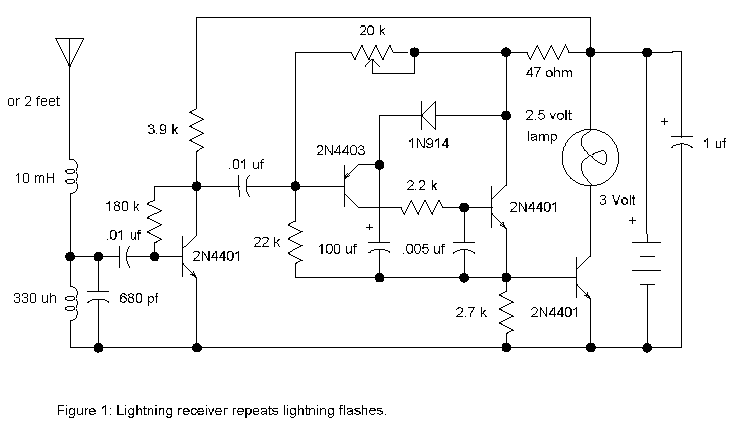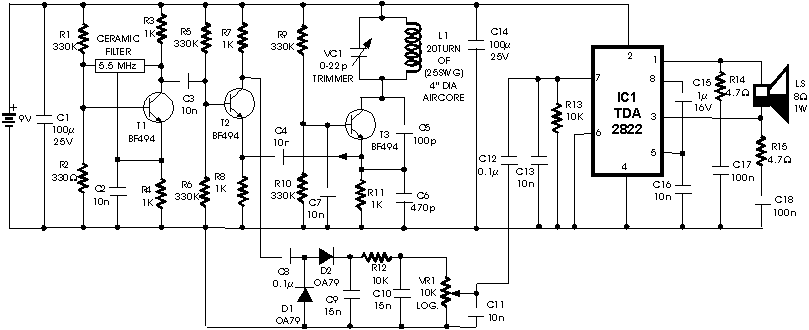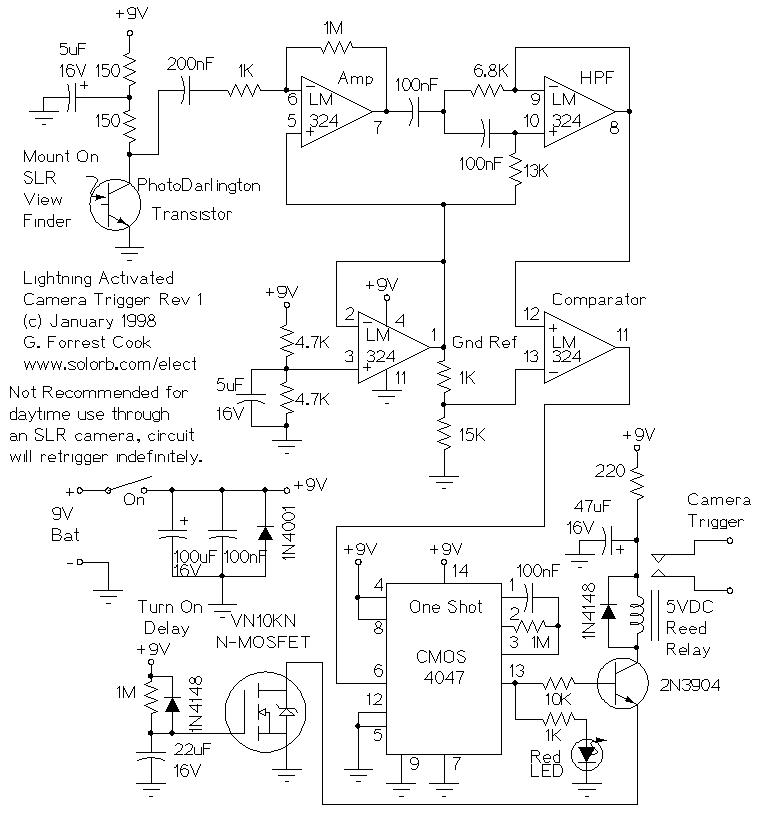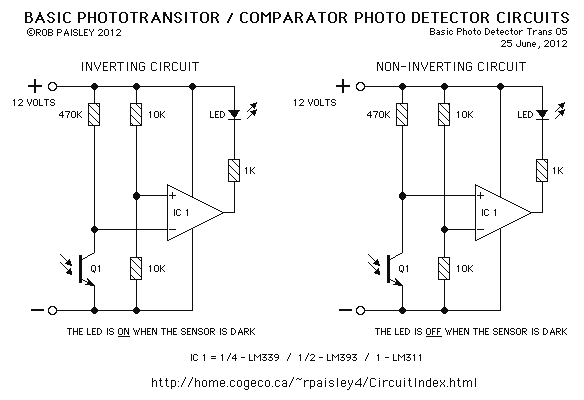
Lightning Detectors

A bright lamp flashes in synchrony with the lightning bolts, indicating the proximity and intensity of the storm.
The described circuit operates as a storm warning system, utilizing a bright lamp to provide visual alerts in response to lightning activity. The core of this system is a lightning detection sensor, which can be based on a photodiode or a specialized lightning detection module that captures the electromagnetic pulse generated by a lightning strike.
When a lightning bolt occurs, the sensor detects the rapid change in electromagnetic fields and sends a signal to a microcontroller or a comparator circuit. This component processes the input signal and determines the intensity and frequency of the detected lightning events. Based on the processed data, the microcontroller activates a relay or a transistor switch that controls the bright lamp.
The lamp, often an LED for its brightness and efficiency, flashes in a pattern that correlates with the detected lightning activity. For example, closer lightning strikes may result in faster flashing rates, while more distant strikes could trigger slower flashing, thereby providing a visual representation of the storm's intensity and proximity.
Power supply considerations for this circuit are essential; it may be powered by a battery or an AC source, with necessary voltage regulation to ensure stable operation. Additionally, protective components such as diodes and fuses may be included to safeguard against voltage spikes caused by nearby lightning strikes.
Overall, this circuit is designed for outdoor use, ensuring that it is weatherproof and robust enough to withstand harsh environmental conditions while effectively alerting users to the dangers associated with thunderstorms.A bright lamp flashes in sychrony with the lightning bolts indicating the proximity and intensity of the storm.. 🔗 External reference
The described circuit operates as a storm warning system, utilizing a bright lamp to provide visual alerts in response to lightning activity. The core of this system is a lightning detection sensor, which can be based on a photodiode or a specialized lightning detection module that captures the electromagnetic pulse generated by a lightning strike.
When a lightning bolt occurs, the sensor detects the rapid change in electromagnetic fields and sends a signal to a microcontroller or a comparator circuit. This component processes the input signal and determines the intensity and frequency of the detected lightning events. Based on the processed data, the microcontroller activates a relay or a transistor switch that controls the bright lamp.
The lamp, often an LED for its brightness and efficiency, flashes in a pattern that correlates with the detected lightning activity. For example, closer lightning strikes may result in faster flashing rates, while more distant strikes could trigger slower flashing, thereby providing a visual representation of the storm's intensity and proximity.
Power supply considerations for this circuit are essential; it may be powered by a battery or an AC source, with necessary voltage regulation to ensure stable operation. Additionally, protective components such as diodes and fuses may be included to safeguard against voltage spikes caused by nearby lightning strikes.
Overall, this circuit is designed for outdoor use, ensuring that it is weatherproof and robust enough to withstand harsh environmental conditions while effectively alerting users to the dangers associated with thunderstorms.A bright lamp flashes in sychrony with the lightning bolts indicating the proximity and intensity of the storm.. 🔗 External reference





